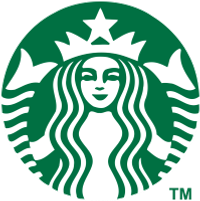
Starbucks Corp
NASDAQ:SBUX
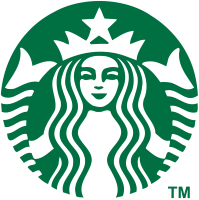

| US |

|
Johnson & Johnson
NYSE:JNJ
|
Pharmaceuticals
|
| US |

|
Berkshire Hathaway Inc
NYSE:BRK.A
|
Financial Services
|
| US |

|
Bank of America Corp
NYSE:BAC
|
Banking
|
| US |

|
Mastercard Inc
NYSE:MA
|
Technology
|
| US |
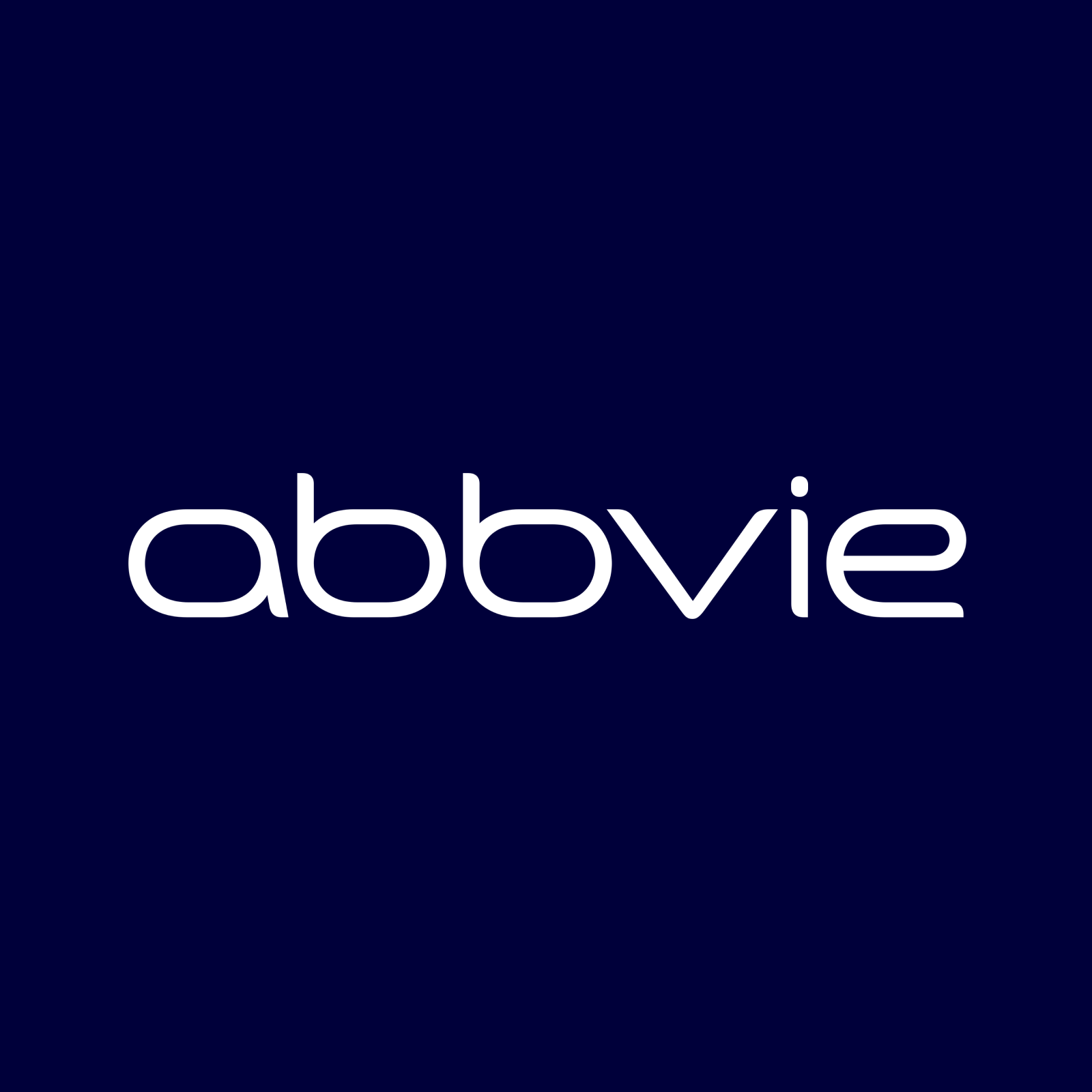
|
Abbvie Inc
NYSE:ABBV
|
Biotechnology
|
| US |

|
Pfizer Inc
NYSE:PFE
|
Pharmaceuticals
|
| US |

|
Palantir Technologies Inc
NYSE:PLTR
|
Technology
|
| US |

|
Nike Inc
NYSE:NKE
|
Textiles, Apparel & Luxury Goods
|
| US |

|
Visa Inc
NYSE:V
|
Technology
|
| CN |

|
Alibaba Group Holding Ltd
NYSE:BABA
|
Retail
|
| US |

|
3M Co
NYSE:MMM
|
Industrial Conglomerates
|
| US |

|
JPMorgan Chase & Co
NYSE:JPM
|
Banking
|
| US |

|
Coca-Cola Co
NYSE:KO
|
Beverages
|
| US |

|
Realty Income Corp
NYSE:O
|
Real Estate
|
| US |

|
Walt Disney Co
NYSE:DIS
|
Media
|
| US |

|
PayPal Holdings Inc
NASDAQ:PYPL
|
Technology
|
Utilize notes to systematically review your investment decisions. By reflecting on past outcomes, you can discern effective strategies and identify those that underperformed. This continuous feedback loop enables you to adapt and refine your approach, optimizing for future success.
Each note serves as a learning point, offering insights into your decision-making processes. Over time, you'll accumulate a personalized database of knowledge, enhancing your ability to make informed decisions quickly and effectively.
With a comprehensive record of your investment history at your fingertips, you can compare current opportunities against past experiences. This not only bolsters your confidence but also ensures that each decision is grounded in a well-documented rationale.
Do you really want to delete this note?
This action cannot be undone.

| 52 Week Range |
72.5
107.21
|
| Price Target |
|
We'll email you a reminder when the closing price reaches USD.
Choose the stock you wish to monitor with a price alert.

|
Johnson & Johnson
NYSE:JNJ
|
US |

|
Berkshire Hathaway Inc
NYSE:BRK.A
|
US |

|
Bank of America Corp
NYSE:BAC
|
US |

|
Mastercard Inc
NYSE:MA
|
US |

|
Abbvie Inc
NYSE:ABBV
|
US |

|
Pfizer Inc
NYSE:PFE
|
US |

|
Palantir Technologies Inc
NYSE:PLTR
|
US |

|
Nike Inc
NYSE:NKE
|
US |

|
Visa Inc
NYSE:V
|
US |

|
Alibaba Group Holding Ltd
NYSE:BABA
|
CN |

|
3M Co
NYSE:MMM
|
US |

|
JPMorgan Chase & Co
NYSE:JPM
|
US |

|
Coca-Cola Co
NYSE:KO
|
US |

|
Realty Income Corp
NYSE:O
|
US |

|
Walt Disney Co
NYSE:DIS
|
US |

|
PayPal Holdings Inc
NASDAQ:PYPL
|
US |
This alert will be permanently deleted.
 Starbucks Corp
Starbucks Corp


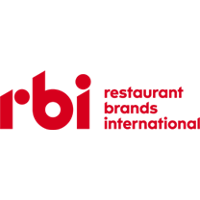
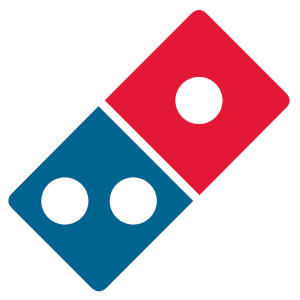
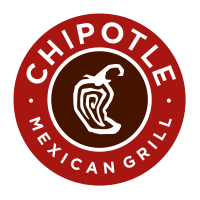
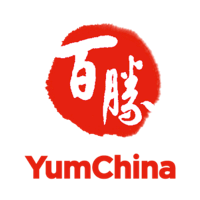

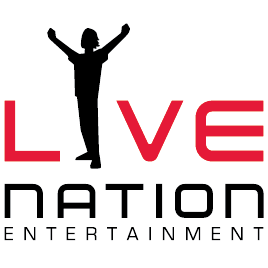

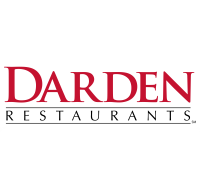





 You don't have any saved screeners yet
You don't have any saved screeners yet

Good afternoon. My name is Hector, and I will be your conference operator today. I would like to welcome everyone to Starbucks Coffee Company Second Quarter Fiscal Year 2019 Conference Call. All lines have been placed on mute to prevent any background noise. After the speakers' remarks, there will be a question-and-answer session. [Operator Instructions]
I will now turn the call over to Durga Doraisamy, Vice President of Investor Relations. Ms. Doraisamy, you may now begin your conference.
Good afternoon, everyone, and thank you for joining us today to discuss our second quarter results for fiscal year 2019. Today's discussion will be led by Kevin Johnson, President and CEO; and Pat Grismer, CFO. And for Q&A, we'll be joined by Roz Brewer, Chief Operating Officer and Group President Americas; John Culver, Group President, International Channel Development and Global Coffee and Tea.
This conference call will include forward-looking statements which are subject to various risks and uncertainties that could cause our actual results to differ materially from these statements. Any such statements should be considered in conjunction with cautionary statements in our earnings release and risk factor discussions in our filings with the SEC, including our last annual report on Form 10-K. Starbucks assumes no obligation to update any of these forward-looking statements or information.
GAAP results in fiscal 2019 include several items related to strategic actions including restructuring and impairment charges, transaction and integration costs, and other items. These items are excluded from our non-GAAP results. Please refer to our website at investor.starbucks.com to find a reconciliation of certain non-GAAP financial measures referenced in today's call with their corresponding GAAP measures. This conference call is being webcast and an archive of the webcast will be available on our website through May 24, 2019.
I will now turn the call over to Kevin.
Well, thank you, Durga, and good afternoon, everyone.
I’m very pleased to share with you today another quarter of solid operating results at Starbucks, demonstrating that our Growth at Scale agenda is working. This agenda is enabling more consistent, predictable results through focused and disciplined execution.
Q2 was another solid quarter where we executed well against our long-term strategic priorities. We sustained positive sales momentum in the U.S., delivering up 4% sales comp and a second consecutive quarter of slightly positive transaction growth. We drove a sequential improvement in China sales comp at 3% with a meaningful increase in transaction comp as well while continuing the rapid expansion of our store base.
We opened our 30,000 stores globally and maintained a pace of 7% worldwide net store growth over the past 12 months, which is industry-leading for a company of our scale. Through the Global Coffee Alliance with Nestlé, we expanded our CPG presence into six new markets, and launched Starbucks Coffee on the Nespresso and Dolce Gusto single-serve platforms. And we realized meaningful results from our continued focus on disciplined cost reduction, which helped to mitigate the margin dilutive impact of significant investments made over the past year. Now, these results are a testament to the strength of the Starbucks brand and the power of our customer partner connections, which are important sources of competitive advantage throughout the 78 markets where we collectively serve more than 100 million customer occasions each week.
We are managing the business for long-term growth and value creation by staying true to the mission and values that built this great company, while at the same time embracing new ideas and innovating in ways that are relevant to our customers, inspiring to our partners, and meaningful to our business. We believe this is what builds an enduring company. Our streamlined efforts over the past two years have enabled us to focus more of our resources and management attention on the core drivers of our business and then execute with discipline.
We are making meaningful progress against our three key strategic priorities, accelerating growth in our two target long-term growth markets, the U.S. and China; expanding the global reach of our brand through the Global Coffee Alliance with Nestlé; and increasing shareholder returns.
Streamline is all about simplifying our business while adopting new ways of working so that we can respond to customers’ evolving needs with greater speed and agility, and deliver more sustainable and predictable financial outcomes. As evidenced by the past three quarters’ results, our Streamline strategy is working. One way that we are streamlining our business is by consolidating our Company ownership positions, most recently focusing on Europe. In fact, I was in Europe last week, meeting with our licensed partners, including Alsea to whom we successfully transitioned our Company operated stores in France and the Netherlands, in Q2. Following this transaction, our EMEA segment is now almost 90% licensed. We will continue to evaluate our global store ownership footprint for opportunities to further optimize our portfolio, improve profitability and unlock shareholder value without sacrificing growth. Over the past nine months, our Streamline activities have also fundamentally transformed the way we work to drive a more rapid pace of innovation throughout the Company.
We started our journey in September, restructuring leadership to better support our retail stores, in line with our long-term priorities. We also started to change the way we work to accelerate innovation by embracing modern-day methodologies, including human-centered design that amplifies focus on the customer; smaller cross functional teams that go from idea to action in 100 days, and then learn and adapt; and new applications of machine learning that support various aspects of our business. We also consolidated and centralized our customer and partner research capabilities to provide a single source of quantitative and qualitative insights to inform decisions across the Company.
We clearly defined priorities informed by customer research, our teams are working on a number of innovation projects in our Tryer lab in Seattle, the Tryer lab is a new space that we created complete with all of the assets needed to ideate, prototype and benchmark new store design concepts, in-store equipment, store operations, and many other projects. This new lab enables cross-functional teams to develop a wide range of innovation that is enabling us to constantly improve the customer partner experience in our stores. Collectively, these actions are accelerating the pace of innovation and driving the improving business results that we’ve reported in recent quarters while also building a pipeline of future ideas in the areas of store design, beverage platforms and customer experience.
I will now highlight the progress we're making against each of our strategic priorities, starting in U.S. where we focused on three key drivers of growth, enhancing the in-store experience, delivering beverage innovation, and driving digital relationships. Enhancing the in-store experience encompasses building customer connections and creating those best moments that keep customers coming back, time and time again. We saw continued improvement in our customer connection scores this quarter, driven by the actions we are taking to enable our store partners to better connect with customers. This reinforces our actions are working.
Our efforts in the area of beverage innovation also paid off in Q2 with continued momentum in cold beverage platforms across multiple dayparts. Supported only with the social media strategy that was the second most viral Starbucks campaign ever, Cloud Macchiato launched in March to great success, exceeding our expectations and driving incremental customer occasions. We also received a very strong customer response to our Matcha beverage platform. And finally during the second quarter, we crossed the 50% mark for the deployment of Nitro cold brew in the U.S. company operated stores and we remain on track to reach our goal of 100% deployment, by the end of fiscal 2019.
We are building on this momentum with a strong beverage innovation plan for the summer with product offerings that we believe will address customers’ seasonal taste preferences and needs based. With respect to driving digital relationships, we are pleased with the continued momentum of our Starbucks rewards program.
In the second quarter, we expanded our active member base by 0.5 million customers, a 13% increase that takes active rewards membership to 16.8 million. This momentum has a positive impact on a results with Starbucks rewards members accounting for 41% of sales in U.S. stores in Q2. We are also very pleased with the smooth rollout of our enhanced Starbucks Rewards Loyalty program that provides customers greater choice and flexibility in redeeming rewards.
In addition, we expanded the Starbucks Delivers program in the second quarter to almost 1,600 stores across seven major markets in the U.S. It is still early days in our primary focus is to drive customer awareness that leads to trial and adoption of this new channel. This approach is enabling us to refine the program as it grows and ensure a quality customer experience. We remain excited about the potential of delivery and will continue to update you on our progress in coming quarters.
Finally, we announced a $100 million investment in Valor Siren Ventures to continue to accelerate the pace of innovation by providing Starbucks with early visibility and access to the most relevant technologies, products and solutions for the retail industry. The combination of measurable improvements and customer connection, market response to new beverage platforms and continued growth in active Rewards members provide evidence this strategy is working.
I will now move on to our second key growth markets, China, where a year ago, we were integrating our East China acquisition as we unify China mainland into a company operated market. With that integration largely complete, all stores opened for 13 months or longer in China mainland are now included in our comp base, starting in Q2.
China delivered 3% comp sales growth for the quarter, up from 1% in Q1 with meaningful improvement in traffic comp, relative to the prior three quarters. This performance is especially noteworthy when you consider the intensity of competition from discounting in China, as well as our aggressive pace of new store development.
On the development front, we opened 553 net new stores over the last 12 months, representing a 17% annual growth rate. Importantly, we continue to achieve best in class profitability and returns on these investments, which reinforces our conviction to sustain a pace of 600 net new stores annually with the goal of reaching 6,000 stores in fiscal ‘22.
This development program is fundamental to our strategy of building the category-leading concept in the world's fastest growing major economy. While the growth in long-term opportunity of China’s specialty coffee category will continue to attract many competitors, our leadership position is underpinned by our brand strength and operating results, which are the key points of competitive advantage in China.
We win because of the premium quality of our coffee and handcrafted beverages, the exceptional third place experience we create in each store, and the emotional connection that our partners have built with our customers. Each of these points of differentiation is reflected in customer feedback from a recent brand equity survey that we performed annually, which reaffirmed that Starbucks continues to lead across key consumer metrics in the specialty coffee category and is the customers’ first choice for away from home coffee.
We're building on that brand strength and have successfully rolled out Starbucks Delivers in partnership with Alibaba to more than 2,100 stores across 35 cities throughout China. Our team in China accomplished this in only four months, again demonstrating our operational agility. While still in the launch phase, performance to date is meeting our expectations with average delivery time under 20 minutes, higher average ticket and strong trial from existing Starbucks Rewards members. This gives us confidence that we are building a meaningful and sustainable delivery channel to complement our existing in-store experience as we plan to expand Starbucks Delivers to 3,000 stores across 50 cities in China, by the end of fiscal 2019.
We are very pleased with the performance of the new Starbucks Rewards program in China, Since the launch a mere four months ago, member acquisition has accelerated. And 90-day active Rewards members increased by 1 million during Q2 to total of 8.3 million. The phenomenal growth of the Starbucks Rewards program in China is a testament to the power of the brand. We are now building on this momentum with plans to bring mobile order and pay to China by the end of fiscal 2019. We are making this new feature available by leveraging our current digital infrastructure and the Starbucks app to enhance our ability to serve customers, both on our app and in our stores.
We are very pleased with our continued success in China. The strength and relevance of the brand, expansion and performance of our new stores, accelerating comp growth in existing stores, positive progress on Starbucks Delivers, and a phenomenal customer reception to the Starbucks Rewards program are all signs that we are well-positioned for long-term growth in China.
And moving on to our second strategic priority, expanding our global reach through the Global Coffee Alliance with Nestlé. The Global Coffee Alliance exceeded our expectations during the second quarter from a top-line perspective and continues to expand the reach of the Starbucks brand.
Late in fiscal Q2, Nestlé launched the first 24 Starbucks SKUs across three platforms, Starbucks coffee by Nespresso, Starbucks coffee by Dolce Gusto, and Starbucks roasted brown and whole bean coffees through CPG channels. These products co-created by Starbucks and Nestlé are now being deployed to 16 global markets as part of our Wave 1 rollout through September. The first six of these markets launched in March, extending our reach to major retailers. Retailers are supported by a full suite of marketing resources that are adaptable for each market across digital, social, and in-store channels, to drive greater awareness of the Starbucks brand globally.
The inaugural launch marks just the beginning for this Global Coffee Alliance with the robust pipeline of new products and markets for Starbucks at home and in foodservices lined up to support future growth, driving financial returns as well as the worldwide expansion of the brand.
And finally, I will share the progress we’re making on our third strategic priority, increasing our focus on shareholder returns.
In March, we initiated a new $2 billion, accelerated share repurchase plan, which we expect to complete by the end of June. This puts us on a path to deliver over 80% of our $25 billion shareholder capital return commitment by the end of this fiscal year. With a significant operating cash that our business continues to generate and a unwatchful on investment returns, we are well on our way to delivering against our shareholder capital return commitment.
In summary, the strength of our performance in Q2 has further validated our Growth at Scale agenda and the strategies we are pursuing to create long-term shareholder value with more sustainable, predictable business results, driven by focused and disciplined execution. We're making solid progress on each of our key strategies. But strategy is ultimately about execution. So, the credit for our success goes to the Starbucks partners around the world who probably wear the green apron. Each of them relentlessly delivers an elevated Starbucks experience, and for that I am both proud and grateful.
With greater focus and discipline, we have positioned our Company for the next chapter of growth, growth that is anchored in our mission, our values and in our brand promise. We are playing the long game as we continue to look to the future and build an enduring company.
With that, I'd like to now turn the discussion over the Pat to walk through consolidated and segment results for Q2, and provide an update on our full-year outlook. Pat?
Thank you, Kevin, and good afternoon, everyone.
I too am pleased with the sustained positive business momentum that we demonstrated in the second quarter. On a reported basis, total revenue grew 5%. Excluding the impact of Streamline related activities, notably the Global Coffee Alliance as well as the impact of foreign currency translation, total revenue grew 9%. This increase in revenue was underpinned by the growth of our global retail business, including net new store growth of 7% over the past 12 months, and global comp sales growth of 3%. Non-GAAP EPS of $0.60 was up 13% versus prior year and included a favorable impact of $0.01 related to discreet income tax items.
I will now take you through our Q2 operating performance by segment. Our America segment delivered 8% revenue growth in Q2, driven by net new store growth of 4% over the past 12 months and 4% comp sales growth with slightly positive comp transaction growth in the U.S. for a second consecutive quarter, as Kevin highlighted earlier. Key drivers of America’s comp sales growth in the quarter were an improved in-store experience and a stronger beverage platform. Beverage, our highest margin category, contributed 3 points of comp sales growth in Q2, while food drove 1 point comp of sales growth. Within beverage, our cold platform continued to perform well, led by refreshment, iced espresso and ice coffee. Beverage innovation also contributed to comp sales growth in the quarter with the successful launch of Cloud Macchiato and the ongoing strength of our Cold Foam platform.
And while much of the beverage comp sales growth was driven by ticket, close to half of the ticket growth was from beverage mix and attach, demonstrating that our higher margin premium offerings resonate with customers, and customers bought more beverages per transaction. From a daypart perspective, we saw continued strong transaction growth at peak. Additionally, afternoon performance improved for a third consecutive quarter with the best performance in the past three years as our improved in-store experience is driving improvement across all dayparts.
In addition to strong revenue performance, America's non-GAAP operating margin expanded 120 basis points to 21.3% in Q2, primarily due to sales leverage, cost savings initiatives and new revenue recognition accounting on stored value card breakage, partially offset by partner and technology investments, which were largely funded by upside from U.S. tax reform.
Moving on to China Asia Pacific or CAP, our fastest growing business segment. CAP segment revenues grew 9% in Q2. Excluding the 4% impact of foreign currency translation, revenue grew 13% in the quarter. This was driven by 12% net new store growth over the past 12 months and 2% comp sales growth.
I would now like to highlight the second quarter performance of two key markets in our CAP segment, China and Japan. We continued to open new stores at a rapid pace in China, growing store count by 17% versus the prior year. Importantly, our new stores continued to deliver exceptionally high returns, even with higher market penetration. China also delivered comp sales growth of 3% in Q2 with just a 1% decline in comp transactions, a meaningful improvement relative to the prior three quarters, helped by delivery and other digital initiatives. 4% comp ticket growth was driven by pricing, merchandise and food. The momentum we saw in our Japan business at the start of the fiscal year, continues into Q2, driving 3% comp sales growth as well as comp transaction growth for the third consecutive quarter. These results were driven by successful LTO performance in blended and espresso beverages, as well as the continued growth of our Starbucks Rewards program in Japan.
CAP’s non-GAAP operating margin increased by 60 basis points to 23.2%, primarily due to sales leverage and cost savings initiatives.
Onto our Channel Development segment, which recorded a revenue decline of 21% in Q2, including the impact of the Global Coffee Alliance, which reduced segment revenues by approximately $120 million in the quarter, as expected. Excluding the impact of the Global Coffee Alliance, segment revenues were flat. Non-GAAP operating margin declined by 730 basis points to 34.3% in Q2, largely due to the impact of Streamline. Absent the 640 basis-point Streamline impact, the segment’s non-GAAP operating margin declined 90 basis points. While the profitability of the segment will continue to evolve, we are pleased with the growth in overall performance that the Global Coffee Alliance is driving, which is slightly ahead of our expectations to-date in fiscal ‘19 and is supporting the continued expansion of the Starbucks brand worldwide.
Consolidated operating margin totaled 15.8% on a non-GAAP basis, down 40 basis points year-over-year, largely due to the impact of licensing our Channel Development business. Excluding the 80 basis-point unfavorable impact of Streamline activities, non-GAAP operating margin expanded by approximately 40 basis points, reflecting the impact of cost savings initiatives, sales leverage, and new revenue recognition accounting for card breakage, partially offset by investments in our partners, technology and siren retail.
Moving on to our guidance for fiscal ‘19. Now, at the midpoint of our fiscal year, we have better visibility to anticipated full-year results. We now expect fiscal 2019 GAAP EPS in the range of $2.40 to $2.44, up from a range of $2.32 to $2.37. Our fiscal 2019 non-GAAP EPS is now expected to be in the range of $2.75 to $2.79, the midpoint of which implies approximately 14% year-over-year growth. Relative to our previous non-GAAP EPS range of $2.68 to $2.73 for fiscal 2019, two-thirds of the increase is attributable to tax benefits and one-third is driven by better than expected operating results to-date in fiscal ‘19.
At the consolidated level, we still expect operating margin for fiscal ‘19 to be down moderately relative to fiscal ‘18. Compared to previous expectations, this reflects an improvement in Americas operating margin, offset by a reduction in Channel Development operating margin and continued investments in siren retail. Driven by better than expected sales, we now expect Americas operating margin for fiscal ‘19 to improve slightly versus prior year. Conversely, Channel Development operating margin for fiscal ‘19 is now expected to land in the mid 30% range due to shifts and sales mix. That said, we continue to be pleased with the overall performance of the Global Coffee Alliance.
Additionally, for fiscal ‘19, we now expect our GAAP effective tax rate to be in the range of 20% to 22% and non-GAAP effective tax rate to be in the range of 19% to 21% with improvements attributable to discrete tax benefits.
All other full-year 2019 guidance metrics, including global comp growth and net new stores, are unchanged from what was previously communicated and reaffirmed on our first quarter fiscal ‘19 earnings call.
Although we don't provide annual G&A guidance, we would like to really affirm and clarify our previous commitment to reduce G&A by 100 basis points as a percentage of system sales over a three-year period ending in fiscal ‘21, net of investments. We are absolutely committed to delivering on this commitment and will do so by limiting non-GAAP G&A to approximately $1.7 billion for fiscal ‘21. This will equate to a three-year CAGR of approximately 1% in non-GAAP G&A with fiscal ‘18 as our base. Given our commitment to sustain high single digit revenue growth, this disciplined management of G&A will help to unlock operating leverage in our overall economic model. We will accomplish this through a combination of cost reductions and sales leverage, even as we continue to invest in areas that are essential to the growth and vibrancy of our business. A large portion of these investments will be made this year, primarily a carryover of investments initiated in fiscal ‘18, and largely funded by upside from U.S. tax reform. These investments also include the impact of our siren retail business, which is expected to dilute our overall operating margin by approximately 70 basis points this fiscal year. These investments are a key reason for our margin performance today in fiscal ‘19, despite the meaningful comp sales growth we’ve delivered. Please note that all of this is consistent with our full-year guidance for 2019, as well as our ongoing growth algorithm.
To summarize, we are very pleased with our performance in the second quarter and fiscal ‘19 year-to-date. We are confident in our ability to deliver our fiscal ‘19 guidance while investing for the long-term to build an enduring brand. Of course, none of this would be possible without the significant efforts of all our partners in our 78 markets across the globe. It is their unwavering commitment to serving our customers that drives the financial results and the outlook that I’ve shared today.
And with that, Kevin and I are happy to take your questions, joined by Roz Brewer and John Culver as Durga outlined at the top of our call. Thank you. Operator?
[Operator instructions] Our first question comes from the line of John Glass with Morgan Stanley. Please proceed with your question.
Hey. Thanks very much. I wondered if you could just talk a little bit about what unlocked the U.S. margin improvement this quarter. If you exclude the impairment or the restructuring charge, it was a meaningful improvement versus the prior quarter, and comps really didn't change. And, so maybe talk about what the components are that you got this quarter, you didn't see last quarter. And when you talk about modest or slight improvement in the year, it seems like with the back half being easier, you're lapping some of the investments you made a year ago, post tax reform that may actually be -- it would seem that that's a modest assumption, just a modest improvement in U.S. margins.
John, this is Pat. Thank you for the question. We are very pleased with Americas’ overall margin performance. And just to highlight, non-GAAP operating margin was up 120 basis points versus prior year, which was a meaningful sequential improvement from the 60 basis-point contraction in Americas’ non-GAAP operating margin in Q1. And there were really three key drivers of the improvement. First, sales leverage, which included the impact of pricing, as well as cost savings initiatives, primarily in supply chain. I would also highlight, however, contribution from an accounting change related to breakage, which benefited our non-GAAP operating margin. These were offset, as you mentioned, to some extent, by the investments that we made in our partners and in technology. Those investments were largely initiated starting in Q3 of last year and were predominantly funded by upside for U.S. tax reform.
So, you're absolutely right because we make our way into the back half of fiscal ‘19. We will face less pressure from those investments. However, I’d highlight, we are making a meaningful investment in the fourth quarter in the Americas division, behind a leadership conference. And that is factored into our overall guidance for the year. But, it's on that basis that we have taken up our full-year guidance for Americas’ non-GAAP operating margin to a slight improvement versus prior year versus last quarter when we had outlook a slight degradation in margin, year-over-year for the full year.
Our next question comes from line of Sharon Zackfia with William Blair. Please proceed with your question.
Hi. Good afternoon. I guess, I'd be curious to hear how the digital relationships are going that are not Starbucks Rewards. And if you could kind of quantify where that is now. I think, last quarter it was 13 million. And how much that's contributing to the acceleration you're seeing and the Starbucks rewards memberships itself, kind of in a conversion there?
Thanks, Sharon. Just a few numbers for you. We are seeing about 16.8 million active SR members, that’s up 13%. We are still seeing our MOP continuing to grow just over 15%, and that's up 3% from prior year, flat quarter-to-quarter. Our registered, non-SR digital relationships grew to 15.3 million. And so, that's up just over 2%. This is the quarter that we did introduce the new multi-tier redemption plan, which includes also the redemption for all for our new members. And so, we are just in the beginning of that program. And this is part of the growth that we are expecting in the future.
Our next question comes from the line of Matthew DiFrisco with Guggenheim Securities. Please proceed with your question.
Hi. This is Matt [ph] on for Matt. Just one question on the China traffic. I know it’s roughly four quarters of negative traffic at this point. I was just wondering why you're not seeing better support from the Rewards program, and if you think the mobile order and pay is the key unlock to transaction growth in China.
Yes. Matt, this is John. I would say that first off, as I shared at the investor conference in December, the key metric that we track as it relates to transaction is total transaction growth in the market, and we saw strong double-digit transaction growth across the entire store portfolio. As a reminder, over 80% of our total revenue growth is driven by our new stores, and the rest is driven by same-store sales. We did see sequential improvement in transactions in our comp stores in the quarter, and I think that’s important to note. And obviously rewards continue to play a key role. From a rewards standpoint, our Rewards membership, we basically up leveled our current program from a frequency-based program to a spend-based program in December. Our 90-day active membership in the quarter, since that change, has increased over 25% on a year-over-year basis.
We now have 8.3 million active 90-day members, and that is a significant step change in terms of the growth rate from what we've seen previously in the program. And today, when you look at Rewards in our stores in China, they represent -- our Rewards members represent over 50% of transactions in our Starbucks stores. Now, clearly, as we continue to lay the rails for digital footprint in China, MOP is going to play an important piece of that. And we're excited about the opportunity to launch MOP in the stores in China by the end of this fiscal year.
Our next question comes from the line of John Ivankoe with JP Morgan. Please proceed with the question.
I was hoping to get some insight on the labor market in the United States, and not just cost and availability, and I do want to address that for you as well. But, the turnover of labor that you're seeing at the store level, the quality that you're seeing at the store level, especially as it relates to processing peak hour transactions, and obviously we can see results broadly which do I think include a slightly positive, very slightly positive same store traffic. But, are there any issues that you're seeing even on a local market basis across the U.S., and what are you doing to be proactive to assume that the labor market is going to continue to tighten from here?
We’ve not really seen really a change in our attrition rate or turnover rate in our labor in our stores. One of the things that I can tell you is that we are increasing our engagement with our partners in our stores. Right now, our customer connections scores are some of the highest in the history. We just experienced this quarter alone a 0.3% improvement over last year. So, we're moving in the right direction there. And lot of that work is coming from what we're doing in terms of making better jobs, easier work in the stores for our partners and actually adding training to the stores. I'll also mention too that we implemented team work this quarter, and team works with our labor scheduling initiatives and it allows our schedule accuracy to improve. And our partners really respond to that because they know their hours. And actually it makes the planning process much easier for the store manager and reduces the amount of work. So, we've got great engagement right now. We're not seeing a shift in our attrition right now.
Your next question comes from Andrew Charles with Cowen and Company. Please proceed with your question.
Great, thank you. Pat, just two separate model questions for you. Just, first on CAP. Can you quantify the impact of CAP margins from the Ele.me delivery commissions? And is there an elevated headwind the margins in the quarter that we should be thinking about as perhaps you subsidize consumer-facing fees to build awareness? And then, I know this could be in the Q, but can you also disclose how much of Americas’ 2Q gross margins improvement was attributable to the accounting change and gift card breakage, given 2Q is the seasonally heaviest timeframe for redemptions? And just on that, is there any net benefit that you're seeing from the gift card breakage change and accounting structure versus what was an interesting income before? Is there any net benefit, if you will, to EPS, or is that net neutral?
So, Andrew, I'll take the gift card breakage part of your question first, then we'll come back to the question on China. First, I want to clarify how the new accounting standard is impacting our P&L generally and then share some perspective on how this has impacted our operating margin specifically. We adopted the new revenue recognition accounting standard this fiscal year. And for the most part, the standard reclassifies stored value card breakage from the interest in other mine below operating income and outside of segment results to the revenue line at the segment level. The new standard also introduces some timing changes, but those are relatively minor. So, on an annual basis, it's mostly a matter of P&L geography that doesn't have a significant impact on EPS.
I also want to clarify that breakage is not accounted for in comp sales. It's simply another revenue driver after new stores and comp sales. On a full-year basis, this change in accounting does have a beneficial impact to non-GAAP operating margin of about 40 basis points with the greatest impact in Q2 due to seasonality. All of this is reflected in our full-year operating margin guidance for fiscal ‘19 at both the consolidated and segment levels.
With respect to the impact to the Americas and how prominent this was, I do want to highlight that the individual beneficial margin impacts of sales leverage and cost savings, primarily from supply chain, were greater than the positive impact that we realized from the accounting change. So, my view is that fundamental business performance was far and away the driver of our improved operating performance in the Americas. It was not driven by an accounting change.
The other thing I would say about the performance in the Americas is that we've seen much higher levels of customer partner engagement. And we believe that this is contributing strongly to our performance across all dayparts in the Americas. So, that's some perspective on the accounting change, and where that sits relative to other drivers of margin performance in the quarter.
With respect to the question you raised around the impact of Ele.me and whether there's a significant impact to our overall margin equation because of commissions and so forth, that is not the case. Really, what’s the performance in China is fundamental business performance, where we're seeing sales leverage, which includes some measure of pricing but also very strong improvement in average spend along with continued discipline and cost management. And that’s what’s driving the margin performance, and we expect that that will sustain. We do not anticipate that because of Ele.me or other digital initiatives, that’s going to have a meaningful impact to our margin equation in that market.
And Andrew, this is John. I would just add on the margin question on CAP overall. In the quarter, we did see an 80 basis-point improvement in margin and that was driven by the sales leverage and cost savings initiatives that the teams have put in place over there, which we guided toward.
Your next question comes from the line of David Tarantino with Robert W. Baird. Please proceed with your question.
My question is on the U.S. business and specifically on the recent changes you made to the Rewards program. Wondering if you could comment on how those changes have been received initially by consumers. I think Kevin mentioned that the rollout was smooth. But maybe there's some media reports that suggest otherwise. So, if you could just comment on that? And then, secondly, if you could talk about your vision for how that will help to drive the business moving forward? Thanks.
Thank you, David. So, a couple of data points that I will share with you. So, the program is newly launched, just in the last couple of weeks. And so far ,we continue to closely monitor the member calls and the commentary versus our call centers. And today, the volume has been well below our forecast. And we've also been monitoring social media as well. And if you are comparing this to times in the past when we made these transitions, this has significantly lower our response from our customers and any transition they are experiencing. The program -- the vision for the program is to really provide more access to potential members. So if you think about it, the first part of it is allowing our new members to have rewards earlier. So, to give you an example, they earn rewards right away, the first rewards comes at 25 starts after two to three visits. In the past, your first free reward would have come after 30 to 40 free visits. And so, this is an opportunities for us to start our customers out and earning and redeeming stars right away.
The second part of it along the lines of the multi-tier redemption for our current members is an option for them to really redeem their stars when they reach 125 stars. Now members are able to redeem their stars at fivetier levels, ranging from 25 to 400 stars, and also to expand the number of items that they can redeem, like merchandise or at home coffee. So, it’s a much broader expanded program for us. There is no star expiration for Starbucks Rewards credit cardholders. So, we think that this program is more accessible for us. We’ve also launched behind this a new Starbucks rewards approximately, so that you can have the interface for the partner. So, when the partner sees your name come up, they are able to know how many starts you have available and begin to explain the program to you when you initially come to the store. So, that’s different than what we’ve had before. We think that that is keeping any of the dissension down just because our partners are now able to explain the program right from the POS system and tell them what's available to them.
Your next question comes from the line of Sara Senatore with Bernstein. Pleased proceed with your question.
Great, thank you. I have a question about the MSR spend per member, just trying to sort of back of the envelope, it looks you might have seen a bit of improvement in either the non-MSR spend per member or the MSR spend, which it might be. So, I just wanted to know, first of all, is that the case, and what you might attribute it to in terms of is it this new loyalty program getting MSR numbers in, is it more of the happy hours that are getting the non-members in. So, just wanted to confirm our calculations and also the drivers. And I did have a point of clarification on the margins in the Channel Development. You said the issue was mix and is it geographic mix or product mix? Just trying to understand that.
Sara, this is Roz. I'll start with what we're seeing in terms of spend per member, and any other changes that could be happening. First of all, the new program is much too new to equate any dollars to it and understand the performance yet. I will tell you that we are seeing an improvement in our afternoon business. We have seen when we introduced more of our cold beverage innovations, it's improving afternoons and are non-SR members tend to chat with us in the afternoon. We're also seeing our drive-through performance increase, and we've added labor hours to our drive-through to accommodate that. So, we do think that we are getting a -- this is a first or actually the second quarter we've seen a slight uptick in our afternoon performance. We believe we will continue to see that based on the kind of beverage innovation that we are seeing. But our current spend per member stayed in line with what we've seen in the past.
And then, Sara, this is Pat, responding to your question regarding Channel Development margin. We did experience a higher mix of lower margin sales in our Channel Development segment, primarily Tazo sales to Unilever, and overall volume subject to our Global Coffee Alliance with Nestlé.
Also contributing to the lower segment margin for the quarter was a non-recurring adjustment for intangible asset amortization, which is not material to our full-year segment or consolidated outlook. And I do want to reinforce that although the full-year segment margin for Channel Development will be lower than we had previously guided, we remained very pleased with the progress we're making with the Global Coffee Alliance with Nestlé, and how that's expanding the presence of our brand globally.
Your next question comes from Dennis Geiger with UBS. Please proceed with your question.
Great. Thank you. Roz, wondering if you could talk some more about the throughput and the operations opportunity in the U.S. Where are you now with that effort, what kind of benefits maybe have you seen in recent quarters, and I guess how significant can that be? And I guess, the last piece of that, is there any chance of the increased customer engagement is any kind of drag on that or no? Thanks.
So, actually, the work that we're seeing on in-store execution is going well for us. A lot of the work that we're doing is automating some of the processes in the stores. Team work’s being the first part of that in terms of labor scheduling and taking hours away from our store managers. We are -- actually removed about 12 hours of work in the stores at this point. So, we'll continue to do that level of work -- administrative work. That's exactly right, administrative work, things like scheduling and work that needs to be done in the store. And it's actually creating more time for customer-facing opportunities. And so, that's where we're seeing customer connection scores increase and actually a chance for our baristas to do the best job that they can in terms of things like informing our customers of the new MTR program. So, we're really actually still moving in that direction. I will also mention too, in terms of do we see anything impact that in the feature, we’ve got plans through the rest of the year to continue to improve the work in the stores, the administrative work in the stores. And you will continue to see that work really. And the way we're monitoring it is to really look at customer connection for us and also partner engagement.
Your next question comes from Jeffrey Bernstein with Barclays. Please proceed with your question.
I had a question on the store ownership structure. Kevin, I know you mentioned it in your prepared remarks and Pat I figured you have a fresh sort of eyes and have franchising experience in your past. So, just wondering, the U.S. business specifically, more than 50% of the stores are still company operated, and I know you talked how you made a big push recently around more of the European region and pushed that pretty significantly licensed. So, I’m just wondering how you think about the right balance of ownership you would think and investors seem to believe it, an increase in the licensing mix with obviously easy operating volatility but also allow maybe for increase in leverage, great return of cash, perhaps better valuation. Just wondering how each of you think about the appropriate mix and maybe what factors might impact the decision, both positively and negatively.
Yes. Jeffrey, this is Kevin. Let me begin and kind of share strategic perspective and I will let Pat jump in and add to this. But, over the last two years, as part of our Streamline efforts, we’ve been focused -- one element of Streamline is retail market alignment. And much of that has been looking at our international markets and making the determination, are those markets best operated in a licensed structure or a company operated structure. So we’ve transitioned to number of markets to licensed partners while at the same time acquiring 100% of the joint venture in East China and unifying China mainland as company operated. And so, we're going to continue to do that. In the markets that we have transitioned to license partners, we’ve transitioned these markets to long-term license partners that oftentimes operate in other markets. Example, most recently in Europe, we transitioned France and the Netherlands to Alsea, who’s a longtime partner who has managed and grown the Starbucks brand in many other markets around the world. And so, by doing that -- that is not only a better financial outcome but it’s also -- they will grow that market faster than we would have. And so, we support those licensed partners in doing that. And we’ve got great respect to the value that they can bring and the way they can bring the brand to life in those markets.
Now, your question, sort of touch upon the U.S. In the U.S. if you look at the returns that we get from operating the U.S as a company-operated market, our ability to bring the brand to life and operate, generates not only maximum financial outcomes for shareholders but it also allows us to ensure that we're establishing and setting the brand in the right way that we are able to then leverage with other markets around the world. Pat, I will let you add to that.
Thank you, Kevin. Jeff, the way we typically think about ownership with respect to any market is really guided by three dimensions, unit level profitability; investment returns; and long-term growth. And when you look at the shape of our U.S. business, what you see is a very high level of profitability, led by the fact that we are a average first concept which has very high gross margin. We have very strong investment returns in our new units, again, led by the fact that we're a beverage first concept that doesn't have a kitchen, it can tend to weigh on total investment and so our sales to investment ratio is very strong in the U.S. and then growth. Even for a concept with our level of penetration, we have significant runway remaining. And that's why as part of our total growth algorithm, we indicated that we saw the U.S. business to continue growing net units at a rate of 3% to 4% per year, which I think is industry-leading for a concept of our scale in a market like the U.S.
And the reality is, with our level of company ownership and our continued commitment to investing behind that growth, we are creating significant shareholder value for the long term by maintaining that ownership position, which is balanced very nicely with a very large and growing licensed business. So, the mix feels very good. And there's no doubt that we’re creating significant shareholder value by maintaining and growing our ownership position in the U.S.
The next question comes from the line of Gregory Francfort with Bank of America. Please proceed with your question.
Just a quick one on the accounting change. Can you quantify if there was an EBITDA dollar impact and what that was during the quarter? And then, my strategic question is just on -- store growth if I think in the U.S. is now 2 points lower than it was maybe a year or two ago. Have you seen changes in cannibalization as you slowed store growth, and how do you quantify that and kind of what are you seeing in the numbers that suggest that that strategy is played out and maybe supporting your per store business?
Gregory, this is Pat. I’ll address the first part of your question in relation to the accounting and then Roz will take the question on U.S. store growth. The accounting change, I'm not going to put a dollar amount on it. But as I indicated earlier, the favorable impact to our consolidated operating margin, our non-GAAP operating margin in the quarter was about 60 basis points. And we do expect that that impact is going to be the highest in Q2 for reasons of seasonality.
And then, over to Ross.
Yes. So, Greg, on -- if we're seeing any cannibalization and what are we doing around store growth in the Americas. We continue to add new stores. As you're probably aware, we're still in the period of store closures, which is going to be always a chance for us to really prune our business and look at what units are performing and not performing. Just in this quarter alone, if you look at the Company operated stores plus the license stores, this quarter, we're up 20 units, and we continue to have a fairly aggressive new store plan. So, what that would look like is that we actually opened 84 stores in this quarter, we closed 97. So, we're in a good position to continue to look at our portfolio and we're adding strategically.
One of the things if you were engaged with us during our investors call, we talked about looking at new formats. And so we're actually adding new formats in addition to that, understanding that the needs data convenience continues to grow, so, things like smaller units, more drive-through stores, and also advancing our cafes to make sure that they are up to date with new technology and new equipment. So, we remain pretty smart about what we're doing with our store development portfolio.
Your next question comes from the line of Will Slabaugh with Stephens. Please proceed with your question.
I had a question on updated thoughts on competition in China, just given new entrants and general coffee store growth in the region, and along those same lines, major competitors in that region offer a different experience, often the less inviting fiscal space, there could be much smaller. So, I’m curious how you’re thinking about the consumer behavior in your stores versus how they’re behaving in better stores and if that makes you want to evolve anything you're currently doing in the market?
This is John. I would say that from a China prospective, we continue to stay focused on the third place experience and elevating the coffee experience and the customer connection that our partners have with our customers who come in the door. In addition, we continue to expand our business into channels, whether that be through delivery, through new concepts that we're creating as well as through eventually the global coffee alliance later this year.
Now, Kevin talked about, we are seeing accelerated competitive environment in China in discounting as part of that. And I would just say that we continue to take the long-term view and belief in our strategy and execute it in a way that continues to elevate the experience for our customers. As a company in China, we’re not looking to buy short-term revenue. Rather, we are looking to continuing to build on the 20-year history and the success that we’ve had in the market. Kevin talked in his comments about our brand strength. It’s never been stronger and more relevant, and that’s indicative through the brand survey that we just recently completed.
Our total transactions continue to grow double digits; our new stores continue to perform best in class. This year, we will open 600 stores and continue to gain share in the marketplace. And the financial foundation that we've been able to build in China regardless of the competitive environment or the changing consumer environment, allows us to continue to make meaningful investment and adapt model to this changing consumer environment.
So, for us, these are the very early days for our business in China. We're very optimistic about the future growth opportunity that exists there. And we’re going to stay focused on the strategy that we put in place on continuing to expand the reach and the availability of Starbucks coffee in the marketplace.
Yes. I would just add to John's comment as well. Starbucks is in China for 20 years now. And throughout that 20-year period, we understand what differentiates Starbucks globally as well as in China, and we're going to stay true to those principles. We're playing the long game and we're very confident in the strategy.
Your next question comes from Andy Barish with Jefferies. Please proceed with your question.
Just dovetailing on China and digging in a little bit more. With East China now in the comp phase, can you give us some color on that contribution to the overall comp? And I think there was more impact in the business historically as there are lot of openings in that business. Is that impact starting to lessen as you move out to some of the lower tiers and spread out the unit growth a little bit?
Yes. Andy, this is John. Obviously, this is the first quarter with which we had East China in the comp base. And when we look at it versus the rest of the old company owned businesses, the comp performance in both markets was relatively equal. And more importantly is when you look at the way in which we have the operation setup across the country in the regions or regions in China throughout China performed very strong. We obviously delivered comp growth of 3%, which was sequential improvement, quarter-to-quarter, top-line revenue grew 16%, total transactions low double-digits, new store performance continue to be best-in-class. We grew store count 17%, and we now operate nearly 3,800 stores across 161 cities. So, we feel that we are in a very good position to continue to win in the marketplace and to continue to lead the growth of the coffee market and capture more than our fair share.
Ladies and gentlemen, that was our last question today. This concludes Starbucks Coffee Company’s second quarter fiscal year 2019 conference call. You may now disconnect.